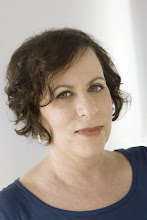I spent a much too hot
Saturday at Photoville with Julie Grahame, as curious as to what it would be as
to seeing particular people and talks.
It was a very long walk from DUMBO to Pier 3, and that could have been
explained more clearly on the website.
When we got closer, we got to see the photography on the fence, and I
was pleased that the work was varied and looked as good as it did. I would have liked to see the photos
larger, but I always want that.
When we finally got to the
site it was time for Jennifer Schwartz talk about her “Crusade for Collecting,”
and find out more about her ideas about presenting photography. I should say here that I supported her
Kickstarter project to raise money, and I consider Jennifer a friend.
As a gallery owner in Atlanta
who represents 16 photographers, Jennifer is full of exciting and clever ideas
on how to expand not only the reach of the photographers, but how to expand the
market for collecting photography.
To that end, her planned dinners with photographers and collectors, the ”Crusade" which will travel to 10 cities starting in March, and her
partnerships with museums and schools shows Jennifer to be a passionate
supporter of photography. I love
her ideas, her energy and her humor.
Photoville is set up with large
metal containers full of photography, some food trucks and a covered tent for
the speakers. On a day when the
heat must have been in the 90’s, there was no respite. But I did see some wonderful work, and
the presentation of it was well done for the most part.
Since I plan on going back
next weekend to hear more speakers, I didn’t want to look at everything. But I did look at “Cruel &
Unusual,” a fantastic exhibit of photography done in prisons curated by Hester
Keijser and Pete Brook, and presented by Noorderlicht (which needs your support). Not
only was there incredible variety to the work, but also much of it was new to
me. The panel moderated by Pete
Brook, and featuring Lori Waselchuk, Deborah Luster and Yana Payusova was
enlightening. That it was a panel
of women photographers was even better.
Yana Payusova combined her
portraits of young prisoners in Russia with the colors and iconography of
Russian to bring the prison culture and religion closer to the
predominant culture of the country.
As a painter first, Payusova felt her photos needed more context to
speak.
Lori Waselchuk spoke of "Grace before Dying," her
incredible project featuring the hospice program of Angola Penitentiary in
Louisiana. Begun in 2007, this
award-winning project continues to travel the country starting conversations
about our prison system. By
collaborating to make quilts with the men in the hospice program who make
funeral shrouds for prisoners, Waselchuk has added an easily accessible and
unexpected aspect to the project and the larger issue of who we imprison and
how we feel about them.
Deborah Luster comes to this
kind of photography from a very personal place—a contract killer murdered her mother when she was young. Photography became a way for
her to work through her feelings.
While hired to shoot a story about poverty in Louisiana she went up and knocked on
the door of a prison and was allowed in to shoot the inmates.
Seeing that there were
several dress-up holidays in the woman’s prison, Luster began shooting small
photographs she gave away to her subjects. Overall, Luster has given away about 25,000 images, taken in both men and women’s prisons.
This made Luster realize, “the power of the
personal photo in peoples’ lives.” Some people had been in prison so long they had no idea what they looked
like. Others sent the photos to
family members. Luster told the
story of one woman with 19 children who had been in prison for many years and
had no contact with her family.
After sending the photos to them, three of the children came to visit.
I am looking forward to next
weekend and the talks offered, and will look at the balance of the exhibits
then. I do have questions about
Photoville, especially what was the money raised on Kickstarter going to be
used for? None of the speakers I
asked were paid to come, none had their airfare paid, and many came from the
west coast. So what is the money
for? If Photoville was happening
before the Kickstarter campaign began, I’d like some transparency to know where
the more than $30,000 is to be used.
And really, if you plan on
hosting this again next year, why not in April or May, when the weather won’t
be so oppressive?
Fence photos courtesy of Sari Goodfriend. Panel photo courtesy of Julie Grahame.
Labels: Crusade for Collecting, Deborah Luster, Grace Before Dying, jennifer schwartz, julie grahame, lori waselchuk, Noorderlicht, Pete Brook, photography, Photoville, stella kramer, stellazine, Yana Payusova


















